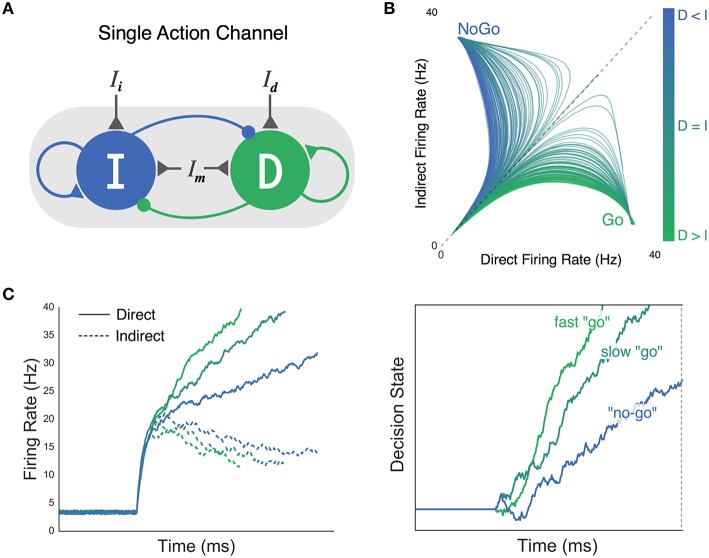Figure 2.
Believer-Skeptic framework and competition between the direct and indirect pathways in neural and decision space. (A) The direct (D) and indirect (I) pathways are modeled as two competing (i.e., mutual inhibition) accumulators with recurrent self-excitation reflecting population attractor dynamics. Selective input to the direct (Id) and indirect (Ii) pathways is weighted and summed with input from a modulatory (non-selective) population (Im) which controls the baseline excitability of the network. (B) Network state plotted as a function of different ratios of direct and indirect pathway activation. Greater activation of the indirect pathway leads to fast attraction toward a NoGo state (more blue, motor suppressing), whereas greater activation of the direct pathway attracts the network toward a Go state (more green, motor facilitating). (C) Left panel: firing rates of direct (solid lines) and indirect pathways (dotted lines) plotted across time for different ratios of input (Id:Ii). Right panel: accumulation of decision evidence toward an execution threshold, reflecting the normalized difference of the direct and indirect pathways in the left panel. High Id:Ii ratio accelerates the rate of evidence accumulation, leading to a fast “go” decision (green). As this ratio is reduced (bluish-green), weaker attraction by the direct pathway manifests as a slower rate of accumulation, producing a “no-go” decision when evidence fails to reach threshold by a deadline (blue).

